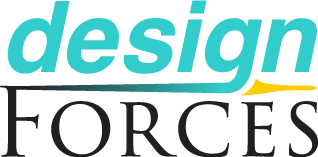Design Thinking
Discover new perspectives or interpretations of your current situation analysis for improved decision making.
Review and/or redefinition of your situation
Stop missing overlooked aspects
Detect possibilities and mitigate risk
What is the Signal?
Every week brings new data, trends, and opinions to your situation. While you may think you have covered everything, your intuition tells you that you might need a different angle to find the signal. If something does not feel right, it might just be hype or noise making you uneasy.
Other decision-making challenges that blur clarity include:
Problems defined too broadly, or framed in the wrong way
Measuring irrelevance
Unclear priorities across time horizons
Internal misalignment and disagreement
Key Benefits
Direction
Clarity
Review, or even redefinition, of your challenges and direction.
Unblocking
Tension
Making ways through interlocked opposing positions.
Risk-Reward
Balancing
Unbiased proportionate perspective. To not risk gold bars on a guinea pig.
Guidance Through Complexity
A new consulting service where your planning is reviewed to challenge your assumptions, trim them, and add perspective.
The aim is to keep it as brief as possible, focusing on concise lines of commentary that act as catalysts to help you move forward.
You will not receive a lengthy analysis of your analyses. Instead, we are more likely to include a relevant visual to illustrate the perspectives.
Review and/or redefinition of your situation
Stop missing overlooked aspects
Detect possibilities and mitigate risk
Abducing Your SWOT
-
A presentation of the service and considerations on its relevance to your particular situation.
-
A detailed meeting to define your expectations.
You will describe your challenges and present relevant background information along with analyses such as SWOT or situation synthesis. -
Review of your challenges and the background materials provided.
Reframing, redefining, and ideating on your situation to develop new perspectives and/or scenarios. -
Presentation of the perspectives, accompanied by a report as brief as possible, preferably summarized on one page with supporting visuals, emphasizing re-synthesis rather than a new analysis of the materials you provided.
-
Your situation might have changed, and a follow-up session with additional guidance could be relevant.
Moreover, we are always interested in hearing how you have applied the service.
You bring your business case or information - we add perspectives.
In collaboration with you, we comprehend your strategic situation and future scenarios with abductive thinking.
When you are planning your new strategy or is in the need of a review, bringing in abductive design thinking can be a good layer of extra perspectives or redefinitions to seek an extra edge over the competition.
Study: Hiring external consultants is positively associated with firm innovation in emerging markets
more likely to carry out a process innovation
1.4
times
“Firms that hire external consultants benefit in terms of their innovation output.”
more likely to carry out a product innovation
1.7
times
Source: Giebel, M. (2024). Is More Always Better? External Consultants and Firm Innovation in Emerging Markets. Applied Economics, 56(54), 6986-7013.
The creative parts of the design process, definition and ideation, is attributed to abductive cognition and, together with the various methods in the other phases, broadly defines the term Design Thinking.
To understand this better we will have to go a bit philosophically behind knowledge work. In brevity much of planning is made by using a combination of deduction and induction. Deduction is mostly used to reason that general rules are true, based on specific premises, whereas induction generalizes, without certainty, based on specific instances, like we see in statistics.
FAQ: What is Design Thinking?
Abduction then is the creative perspective, the inferred possibilities based on what is known or perceived by the creative, the challenge is to balance imagination with realistic filters to arrive at what is plausible.
Abduction is not as widespread as the other more tangible ones. However, creatives in advertising and design use this a lot. Along with routine they have a personal aptitude or talent for quickly switching between idea generation and realistic criticism of the ideas.
Other FAQs
-
The term is mostly used by professionals within design and architecture firms, typically when giving advice outside of their projects. It is not that other consultants are not creative. So the consultant is from the creative industry, with a workflow involving thinking and working visually often in a non-linear manner.
-
No, not in the traditional sense, although the service is intended for decision makers as well. Many management consultants use an abduction-like approach that is hypothesis-driven, yet through a linear, logical, and numerical way of thinking. It is this type of work, whether done by you or them, that the Design Thinking service seeks to provide new perspectives on.
-
It depends on the complexity of the situation and the scope of the service, as well as our availability. The amount of material to review is also an important factor. Typically, a timeframe of 2 to 4 weeks can be expected.
-
Generally, yes, for example, a continuous oversight or a quarterly review. Otherwise, it will depend on the scope of the services.
Design Thinking Starts with Your Doing
The market waits for no one and will move forward whether you do or not. So, now it is time for you to take action. The service starts with your doing. Book an intro call today.
Obtain new perspectives or interpretations of your current situation analysis, along with future scenarios.
New perspectives on your situation
Stop missing overlooked aspects
Detect possibilities and mitigate risk








